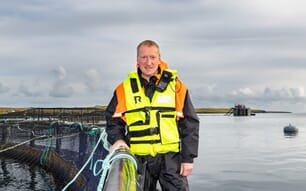The investment is part of Skretting’s 75/25 joint-venture with African Century Foods (ACF) for the production, sale and distribution of feed that was announced last year.
“Within the African continent, there are a handful of regions where aquaculture is developing very quickly: Egypt is leading the way, followed by Nigeria, and also making its mark is Zambia – despite being constrained by irregular access to high-quality feeds,” explains Rob Kiers, Managing Director of Skretting Africa.
“What Zambia does have is a tradition of eating fish and a shared ambition by government and industry to locally produce fresh fish for the domestic market thereby reducing the market’s reliance on imports of frozen products. There is a clear vision from the country to become self-sufficient or at least largely self-sufficient for fish through aquaculture,” he adds.
The new plant, which has a capacity of 35,000 tonnes of feed, is located at Siavonga on Lake Kariba, close to the main fish farming areas in both Zambia and Zimbabwe. The facility houses a dedicated line for extruded tilapia feed and a mash feed line for other animal species. A part of the capacity will be used to supply ACF’s tilapia farms (Lake Harvest) with the remaining supply going to the wider southeast African region.
Test production at the new plant began in March, and feeds are now available to the market.
“Combined with Zambia’s culture of eating fish, which is not the case in all African countries, the country has all the right natural attributes to be a strategically important aquaculture market, including the availability of large bodies of excellent quality water and the ideal temperatures for rearing tilapia. It is also growing a lot of important raw materials like soya and maize,” Kiers continues.
“The fish are there, many of the raw materials are there, so it is a great opportunity to make use of raw materials grown and processed locally. By doing this, the fish feed production will stimulate local community development and economic growth. From a sustainability point of view this supports the United Nations’ sustainable development goals,” he reflects.
Kiers is also pleased that, since Skretting Africa announced it would be constructing a new plant in Zambia, other fish and animal feed companies have confirmed investment plans for the country.
“These markets have the potential to grow, but it takes more than one good player to unlock that potential in a sustainable way. I am very happy that other international companies are now also investing in African markets to really take them forward. It is widely expected that the population of the African continent will double in size in the coming decades, so it will need to at least double its food production, which presents a huge challenge that can only be overcome by investing locally and producing food locally,” he says.


